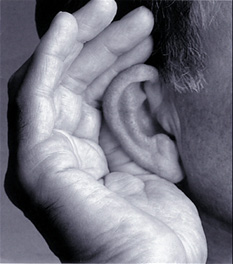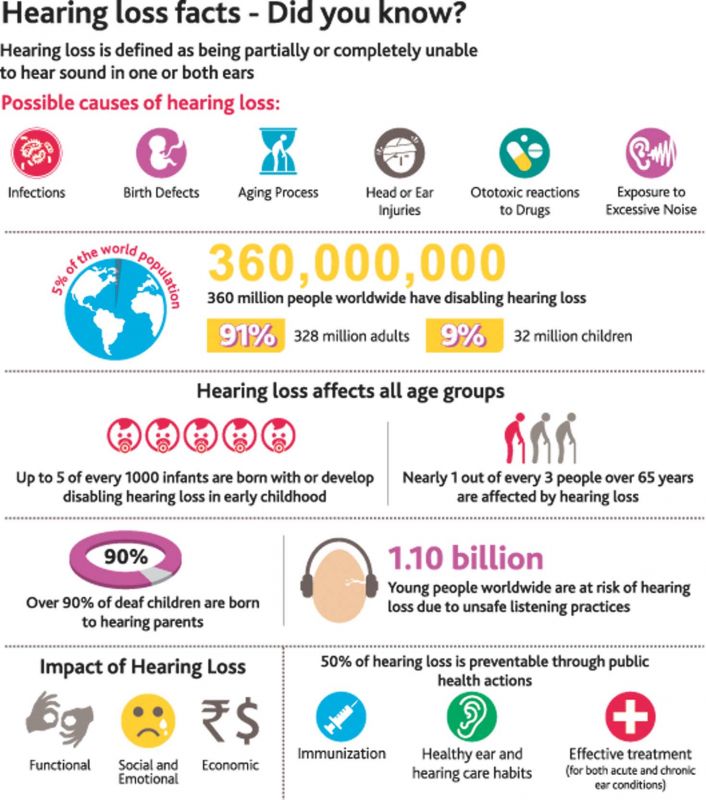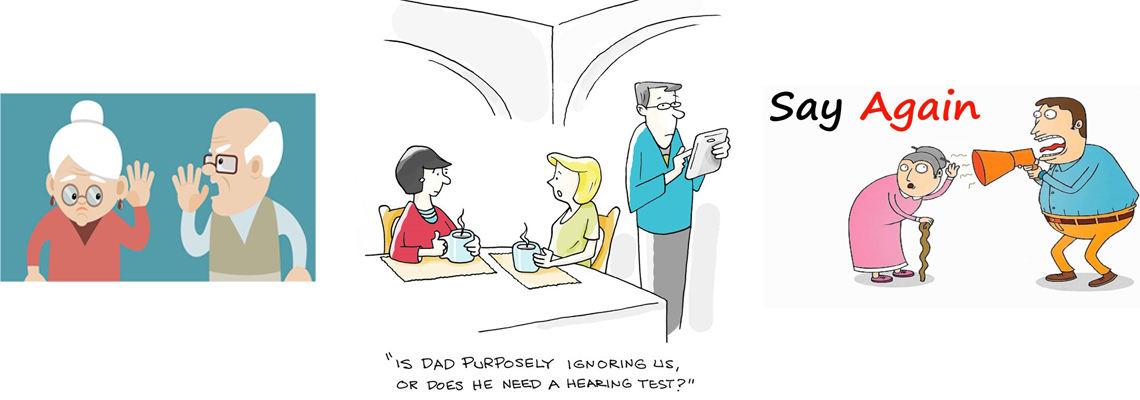
What is hearing loss?
Hearing loss is reduction in ability to hear/understand sounds and varies in severity from mild to profound. Depending on the part of the ear affected there can be three types of hearing loss. Any problems with the outer ear and the middle ear cause a conductive loss which can most often be reversed by medical treatment. Problems with the inner ear (cochlea and the auditory nerve) will cause a sensorineural hearing loss, this type is generally irreversible. Problems in inner ear and middle and/or external ear will cause a mixed hearing loss. Hearing loss affects all age groups although different factors contribute to the type and degree of loss. An approximated 7% of the Indian population suffers from hearing loss.

Conductive Hearing Loss
Conductive hearing loss refers to a problem with the transference of sound from the outer to the inner ear, usually because of damage to the eardrum or the three bones of the middle ear (the OSSICLES, also called the hammer, anvil and stirrup).
In an adult, conductive hearing loss may be caused by earwax blocking the outer ear canal or by OTOSCLEROSIS (a disease in which the stapes become fixed). In a child, it is most commonly caused by ear infection with effusion (a collection of sticky fluid in the middle ear). Sometimes conductive hearing loss may be caused by damage to the eardrum or middle ear due to sudden pressure changes (barotrauma, or AERO-OTITIS MEDIA) or by a punctured eardrum. Conductive hearing loss in children with chronic media can be treated with a MYRINGOTOMY (an operation to drain the fluid from the middle ear). Excessive earwax can be removed with a syringe and warm water, and a PERFORATED EARDRUM that does not heal on its own after a few months can be repaired during an operation called a TYMPANOPLASTY.

Sensorineural Hearing Loss
Sensorineural hearing loss is a general term used to describe hearing problems from a number of conditions. It occurs when sounds that reach the inner ear do not reach the brain because of damage to the AUDITORY (hearing) NERVE or the structures of the inner ear. Its effects are permanent and irreversible in almost all cases. This type of hearing loss tends to progress slowly as a person ages and can affect one or both ears.
People with sensorineural hearing loss usually have problems understanding speech (word discrimination) even when the speech is loud. In general, difficulty understanding speech occurs because the person has trouble hearing certain frequencies of sound. People with sensorineural hearing loss may also have a problem with RECRUITMENT (an abnormally rapid increase in sound loudness). Probably because of sensory cell damage, this means a sound that is not heard at one level becomes painfully loud after only a tiny increase in volume. Every year, about 5,000 infants are born with sensorineural hearing loss caused by genetics, birth injury (Rh incompatibility or loss of oxygen during labor) or damage to the developing fetus because of maternal infection (RUBELLA, herpes or other viral diseases).
After birth, damage to the delicate hearing mechanisms of the inner ear (including the COCHLEA and LABYRINTH) may be caused by prolonged exposure to loud noise, which damages the sensory cells and nerve fibers, particularly if the exposure lasts for a long time. Other diseases causing this type of deafness include MÉNIÈRE’S DISEASE, certain drugs or viral infections. In addition, any disease that affects the flow of blood to the inner ear can also cause hearing problems, including diabetes, emphysema, heart problems, atherosclerosis and some kidney disorders. Sensorineural hearing loss due to problems with the auditory (hearing) nerve or the hearing centers in the brain may be caused by stroke, head injury or damage from a benign tumor on the nerve (ACOUSTIC NEUROMA).
Among the elderly, the most likely cause of sensorineural hearing loss is related to changes in the ear due to aging (PRESBYCUSIS) which even today is not well understood by scientists. In still other cases, the cause of sensorineural deafness is simply not known.
Identification of hearing loss in children
Hearing loss in children can be identifies as early as at birth. At birth, an infant screening carried out, helps to assess the hearing of the child, rule out congenital hearing loss and schedule regular checkups for children who are at risk of hearing loss.
Hearing loss which later develops without an early risk signs can also be assessed using a variety of Audiological evaluation. Rehabilitation when started at an early age is most beneficial of the child’s speech and language development.

How hearing loss affect a child?
Hearing place an important role in the development of speech and language in children. The extend of effect of hearing loss on the development of speech and language depends on the degree or severity of hearing loss. Earlier detection of hearing loss is the key. The sooner the hearing loss is managed, less severe are the effects on speech and language development. It has been recommended worldwide that children with hearing loss need to be managed (Eg: Fitted with hearing aids) before 6 months of age for the speech and language development to be normal/ near normal.

